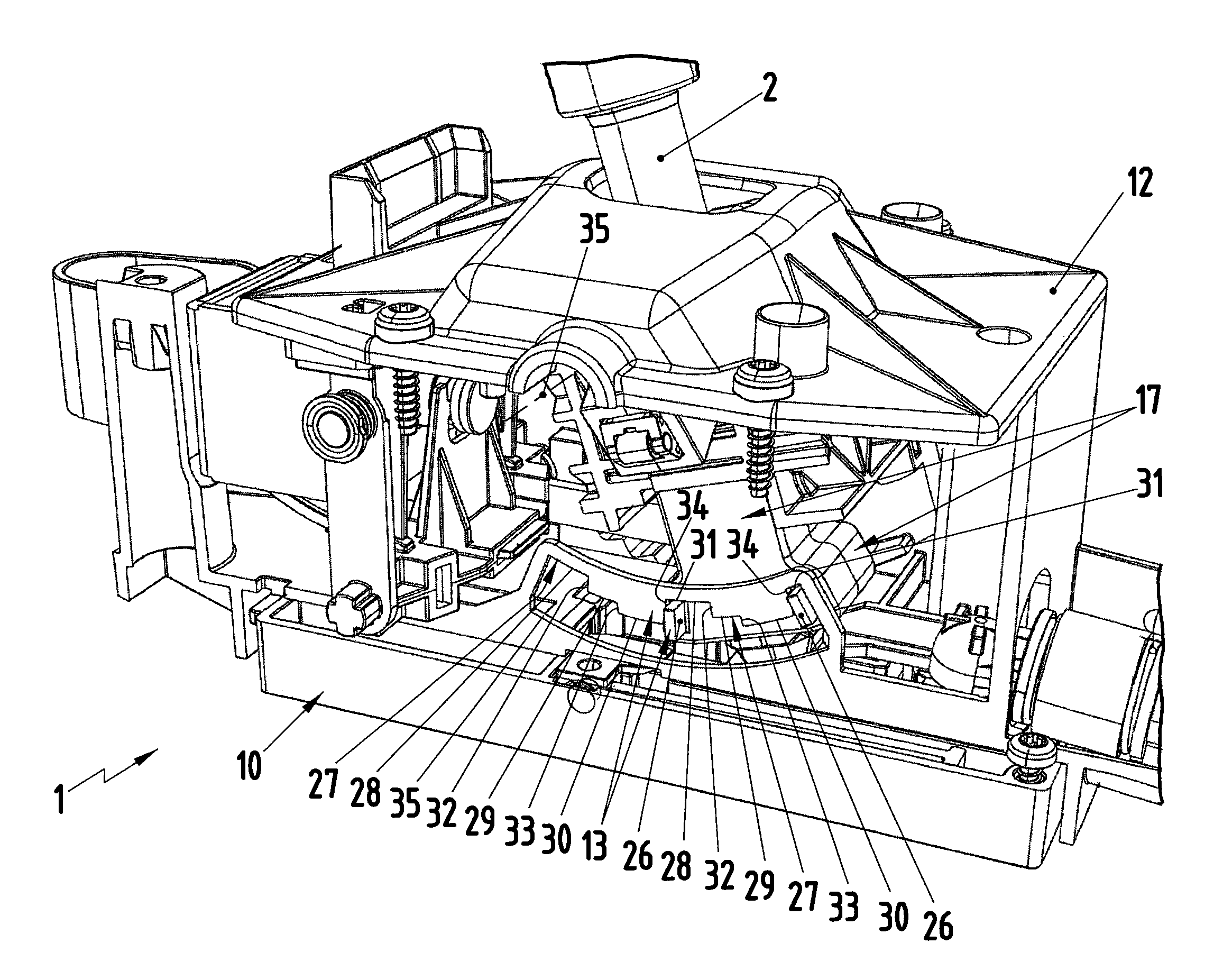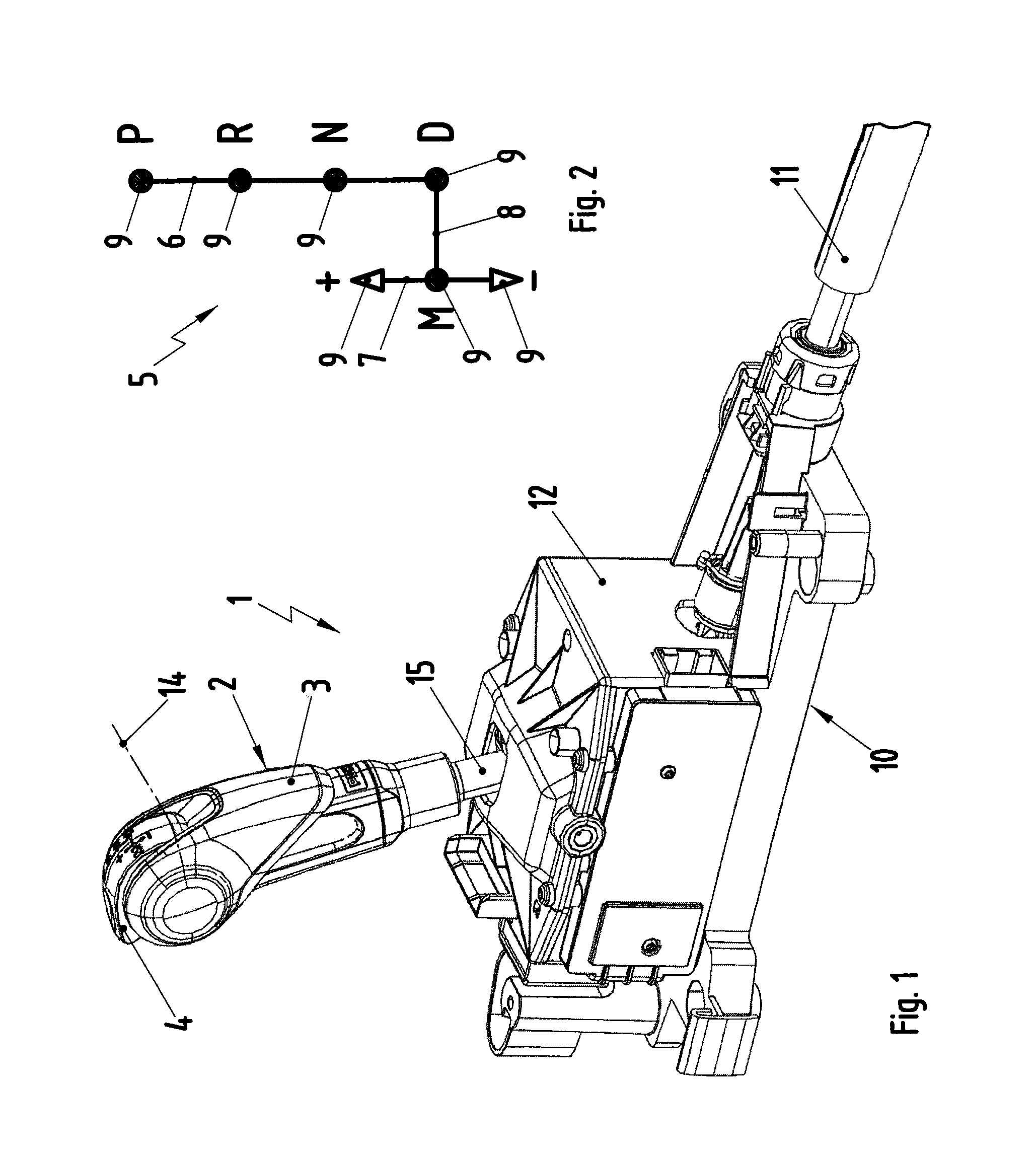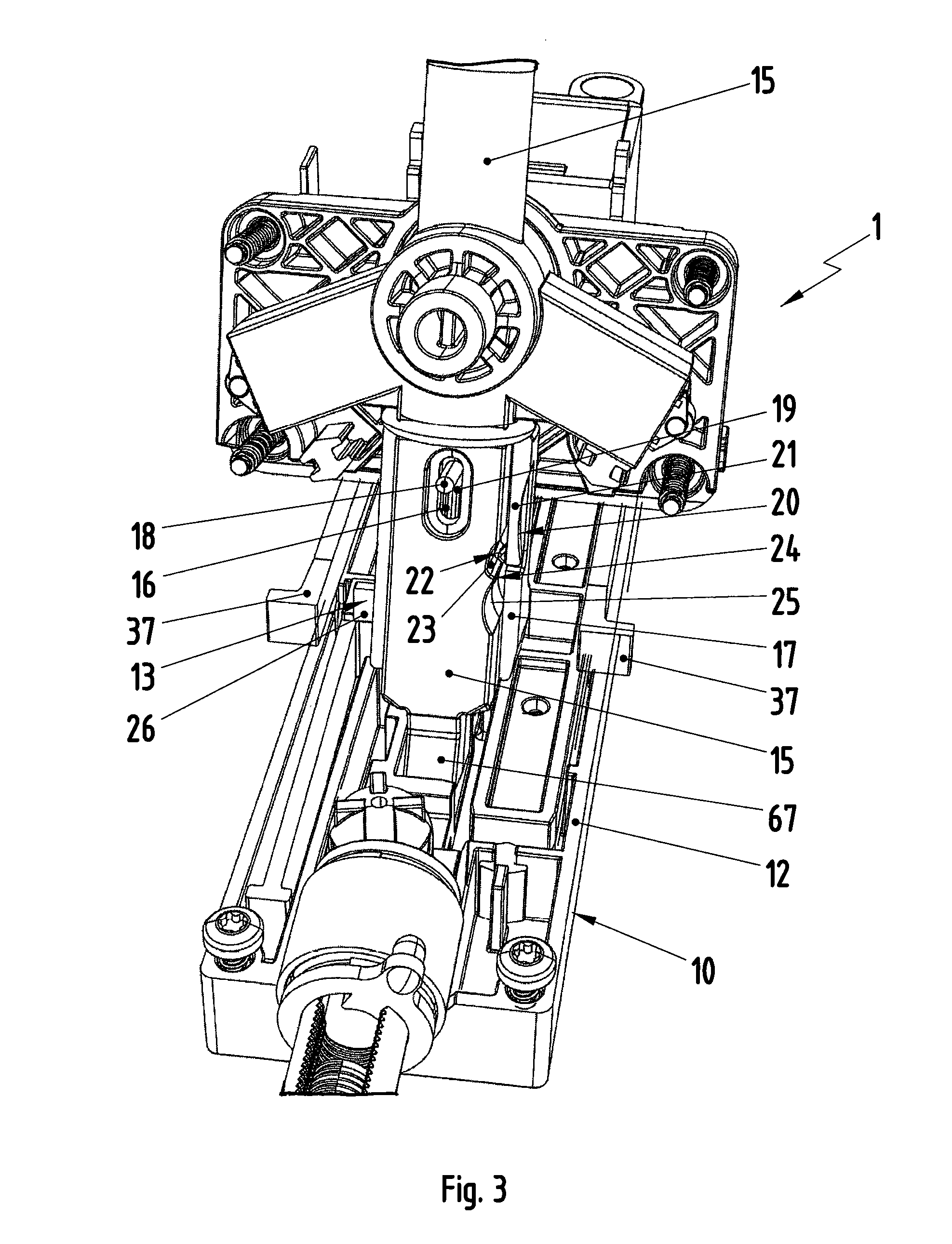Shifting device for an automatic transmission
a technology of shifting device and automatic transmission, which is applied in the direction of mechanical control device, process and machine control, instruments, etc., can solve the problems of reducing the service life of the shifting device, and affecting the play of children, etc., and achieves the effect of high load, high load, and extremely fast shifting
- Summary
- Abstract
- Description
- Claims
- Application Information
AI Technical Summary
Benefits of technology
Problems solved by technology
Method used
Image
Examples
Embodiment Construction
[0024]As shown in FIG. 1, an inventive shifting device 1, which is used in conjunction with an automatic transmission of a motor vehicle, comprises a gear-shift lever 2, which comprises a hand grip 3. A release button 4, which, in this example, is integrated into the hand grip 3, is also provided on the gear-shift lever 2. The gear-shift lever 2 can be moved in a shift gate 5, a simplified view of which is shown in FIG. 2. The shift gate 5 comprises an automatic shift track 6, a manual shift track 7, and a transverse track 8 The gear-shift lever 2 can be moved in the automatic shift track 6 and in the manual shift track 7 to select gear-shift positions 9. For example, the automatic shift track 6 comprises the following gear-gear-shift positions: Park P, Reverse R, Neutral N, and Drive D. In contrast, the manual shift track 7 comprises, for example, a Middle M position, an upshift position +, and a downshift position −. The transverse shift track 8 allows the gear-shift lever 2 to be...
PUM
 Login to View More
Login to View More Abstract
Description
Claims
Application Information
 Login to View More
Login to View More - R&D
- Intellectual Property
- Life Sciences
- Materials
- Tech Scout
- Unparalleled Data Quality
- Higher Quality Content
- 60% Fewer Hallucinations
Browse by: Latest US Patents, China's latest patents, Technical Efficacy Thesaurus, Application Domain, Technology Topic, Popular Technical Reports.
© 2025 PatSnap. All rights reserved.Legal|Privacy policy|Modern Slavery Act Transparency Statement|Sitemap|About US| Contact US: help@patsnap.com



